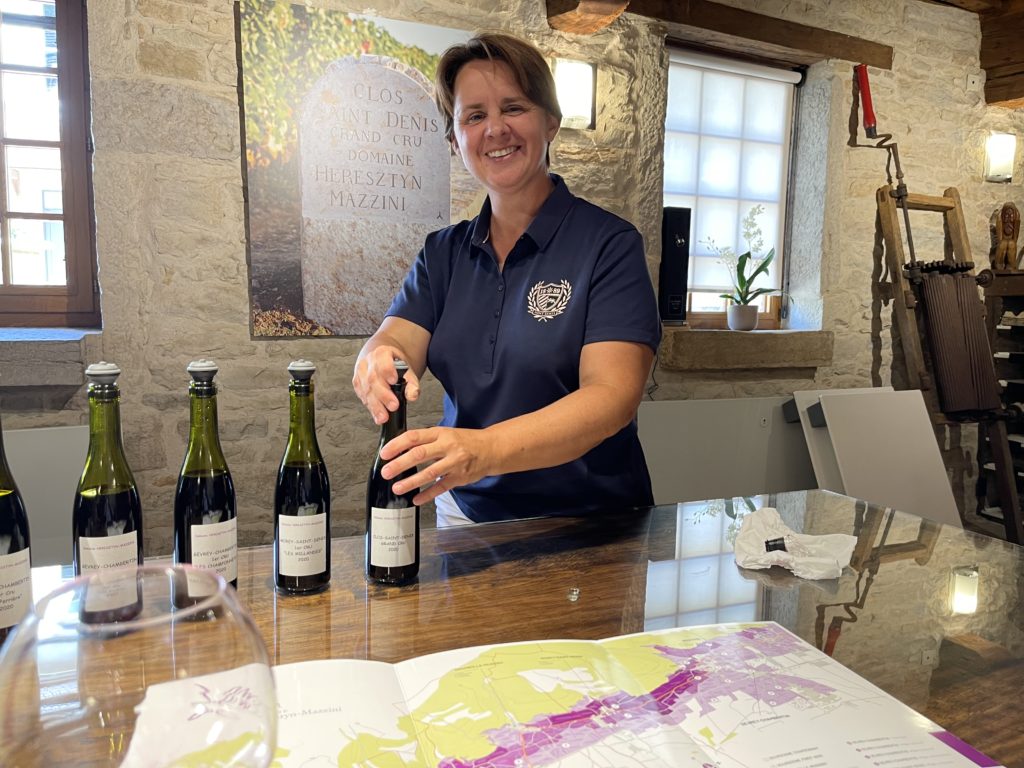Domaine Heresztyn-Mazzini: The names tell a story, give some history, and are important in how this producer presents itself to the world.

Heresztyn-Mazzini carries Polish heritage originating with Florence (Heresztyn) Mazzini’s grandfather. Florence’s husband Simon comes from Champagne origins.
Sometimes names are difficult to pronounce or spell, but in the end, one learns to work with it – even me!
Organic, with a dynamic twist
Domaine Heresztyn-Mazzini works organically, meaning it has the trusted AB certificate that provides a certain guarantee, although not necessarily clarity.
In France, organic certification was introduced in 1985. It has established a green-white logo of “AB – agriculture biologique.” The certification for the AB label fulfills the EU regulations for organic food. French buyers and retailers often ask operators to label their products with AB trademark which refers to French organic products and is well known to French consumers.
This is France’s organic certification. It is sort of clear, although most don’t feel the need to dig into it, much less into the minutiae of the rules for organically certified growers.
In addition, Domaine Heresztyn-Mazzini uses biodynamic preparations (amongst others the 500 and the 502 mixtures), indicating another level of commitment and a wish to move further down the biodynamic road.
For information, the biodynamic preparations are:
- Horn manure preparation (P 500)
- Horn Silica preparation (P 501)
- Yarrow preparation (P 502)
- Camomile preparation (P 503)
- Nettle preparation (P 504)
- Oak bark preparation (P 505)
- Dandelion preparation (P 506)
- Valerian preparation (P 507)
I am not an expert here, but the domaine’s wines have a truly organic feel, meaning a liveliness to the acidity and the fruit mainly found in wines that are exploring the biodynamic way. So this estate is definitely worth looking at and following, in my opinion.
The wines tasted
Below are selected notes, meaning some wines I tasted are not included. The Chambolle village seems fine, but is not showing well currently. The Bourgogne Pinot Noir was not to my liking: sorry. But there’s no reason to dwell on this.
Domaine Heresztyn-Mazzini Gevrey-Chambertin Clos Village 2021
Somewhat more serious than the 2020, this is 75% destemmed, with around 25% new oak from Chassin. The fruit is a bit dark, yet smooth and on the enjoyable side. Not a big charmer, but it has its moments, as 2021 is lively.
(Drink from 2027) – Very Good (88p) – Tasted 08/12/2022 – ![]()
Domaine Heresztyn-Mazzini Gevrey-Chambertin Vieilles Vignes 2021
Not really showing well currently, this is from 70-year-old vines, and is on the highly extracted side, with the mid-palate not fully coming together. Some ’21s need time, and in reality, should not have been pushed vinification-wise. Not my favourite…
(Drink from 2025) – Good (85p) – Tasted 08/12/2022
Domaine Heresztyn-Mazzini Gevrey-Chambertin Les Jouises 2021
Names can sometimes trick, as this is from the vineyards Les Jouises and Fournaux, so just above and below the main road. It has good ripeness, and is rather rich and almost silky in its mid-palate fruit. This is showing the goods, and gives a nice hedonistic impression.
(Drink from 2027) – Very Good (89p) – Tasted 08/12/2022 – ![]()
Domaine Heresztyn-Mazzini Gevrey-Chambertin Les Songes 2021
This is a Tres Vieilles Vignes cuvee, with the oldest vines in Songes having seen more than a century. It has the depth, energy, and intensity of ancient vines. It’s deep, effortless, and with a sensual feel. I love the tension; this is an example of when Tres Vieilles Vignes has true meaning.
(Drink from 2027) – Very Good (90p) – Tasted 08/12/2022 – ![]()
You need to login as a Premium subscriber to read the rest of this article. If you are not a Premium Subscriber, use the subscribe function and sign-up.

 - A true vin d’émotion – a Burgundy of passion
- A true vin d’émotion – a Burgundy of passion - A truly hedonistic wine – lively and enjoyable
- A truly hedonistic wine – lively and enjoyable - A vivacious wine for pure indulgance
- A vivacious wine for pure indulgance - A potential vin d´émotion - frais et léger
- A potential vin d´émotion - frais et léger